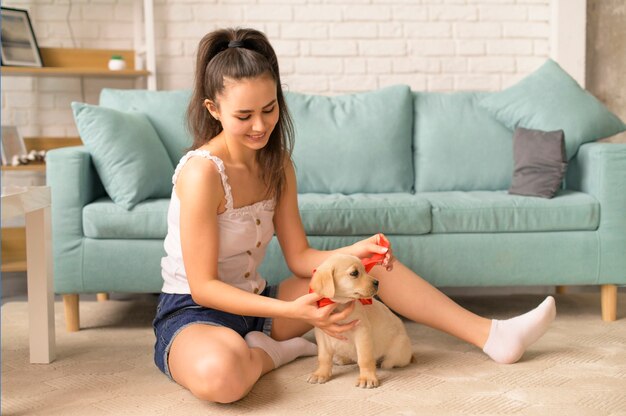Mastering Puppy House Training: Your Guide to Success in an Apartment
Raising a puppy in an apartment brings unique challenges, particularly when it comes to house training. The process requires patience, consistency, and understanding of your puppy’s needs. While homes with yards offer obvious advantages, fear not! With a structured approach and some creativity, you can successfully train your furry friend even in a compact living space.
Create a Routine
Establishing a consistent routine is crucial. Puppies thrive on predictability, which helps them understand when it's time to eat, sleep, and eliminate. Start by feeding your puppy at the same times each day. Typically, a puppy will need to go out 15 to 30 minutes after eating.
Scheduling potty breaks every few hours is vital. In an apartment, you might have limited access to a yard, so consider using puppy pads or a balcony potty solution. As soon as your puppy begins showing signs of needing to go—circling, sniffing, or whining—immediately take them to their designated spot.
Positive Reinforcement
Encouragement and rewards dramatically boost training success. Use positive reinforcement by praising and rewarding your puppy when they eliminate in the correct spot. Treats or a favorite toy make excellent motivators. Over time, your puppy will associate going to the bathroom outside with positive outcomes.
Managing Accidents
Accidents are an inevitable part of the house training journey. A critical point is not to scold your puppy after the fact, as they won't associate the punishment with the accident. Instead, focus on cleaning the area well to remove any lingering odors that might attract them back. Use enzyme-based cleaners for best results.
Increasing Independence
As your puppy becomes accustomed to their new routine, gradually increase their time between potty breaks. This helps them learn to hold their bladder longer, an important skill in environments where immediate outdoor access isn't possible.
Using a crate can be an effective tool in training, providing the puppy with its own space. Puppies generally avoid soiling where they sleep, so this encourages them to hold until they are taken outside.
Financial Support for Pet Ownership
Owning a pet can come with unforeseen expenses. While house training your puppy, consider exploring financial assistance options available for pet owners. These programs can help with veterinary costs, pet food assistance, and even training resources. Here’s a helpful snapshot of options available:
Pet Food Banks 🐾: These organizations provide free pet food and supplies to owners in need.
Veterinary Care Assistance 🏥: Some animal welfare groups offer discounted or free vet services.
Pet Insurance Plans 🐶: Consider investing in a pet insurance plan to manage emergency vet bills.
Training Grants 🐕🦺: Look for local animal shelters offering free or reduced-rate training classes.
House training a puppy in an apartment requires creativity, dedication, and love. By laying a solid foundation, not only will you have a well-trained pet, but you'll also cultivate a bond that will grow stronger with each successful day. Whether you're a first-time pet owner or adding to your furry family, remember that resources and assistance are available to ensure you and your puppy thrive together.
